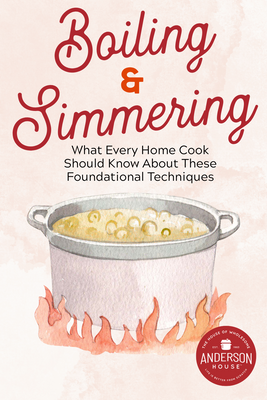A Guide to Boiling and Simmering: What Every Home Cook Should Know About These Foundational Techniques
Posted by Eunice Juanzo on May 23rd 2023
Boiling and simmering are two of the most essential—and often overlooked—cooking techniques in the kitchen. While they might sound interchangeable, they serve very different purposes and can make or break a dish if not used correctly. This is especially true when it comes to soup, where texture, flavor, and aroma rely heavily on how gently (or vigorously) your ingredients are cooked.
Not sure of the difference? You’re not alone. Many home cooks confuse the two. Fortunately, the team at Whole Foods Market has a short, helpful video that clearly shows what boiling and simmering look like in action.
The Difference Between Boiling and Simmering
Let’s break it down:
-
Boiling occurs when liquid reaches 212°F (100°C) at sea level. You’ll see large, rolling bubbles constantly breaking the surface. This high heat is great for cooking foods that benefit from a fast, thorough cook—think pasta, hard vegetables like potatoes or carrots, or blanching green beans. For boiling, set your heat to medium-high or high and don’t walk away—things can go from “just right” to “boiled over” quickly.
-
Simmering, on the other hand, is much gentler. It usually happens around 180°F–205°F. You’ll notice smaller bubbles occasionally rising to the surface and gentle movement in the pot. Simmering is ideal for developing flavor and tenderizing ingredients slowly, making it perfect for soups, stews, chili, and sauces. It allows flavors to meld without the risk of ingredients breaking apart or becoming rubbery.
Why Simmering is the Soul of Good Soup
If you’ve ever wondered why your homemade soup doesn’t taste quite like the one from your favorite café or your grandmother’s kitchen, the answer could be in the simmer.
Simmering is what transforms a pot of broth and chopped ingredients into a deeply flavorful, nourishing bowl of soup. The slow, steady heat gives herbs and spices time to infuse the broth, tenderizes meat without drying it out, and coaxes sweetness out of vegetables like onions, carrots, and tomatoes.
Here’s a quick breakdown of how to apply this technique when making soup:
-
Start with a boil: After you’ve added your broth or water and brought the pot up to temperature, a brief boil is fine to get things going.
-
Reduce to a simmer: Once your ingredients are all in and the soup has returned to a boil, lower the heat and let it gently bubble away.
-
Lid or no lid? Most soups benefit from a partially covered pot. This helps retain moisture while allowing some liquid to reduce, concentrating the flavor.
-
Timing is everything: Simmering time can range from 20 minutes for a quick vegetable soup to several hours for a bone broth or hearty stew.
Tips for Using Boiling and Simmering in Everyday Cooking
-
Boil when you need speed and structure—like when cooking grains, pasta, or hard vegetables.
-
Simmer when you want depth, tenderness, and flavor—especially in soups, braises, and sauces.
-
Taste as you go: Boiling can mute flavors, while simmering enhances them. Add salt, herbs, or acids (like lemon juice or vinegar) gradually.
-
Don’t rush a simmer: If your soup is bubbling like crazy, turn the heat down. A true simmer should be calm, not chaotic.
Final Thoughts
Boiling and simmering might seem like simple techniques, but understanding when—and how—to use each can completely change the outcome of your meals. Whether you’re whipping up a quick weekday soup or letting a hearty stew bubble away on a Sunday afternoon, mastering this balance of heat and patience is one of the best gifts you can give your cooking.

